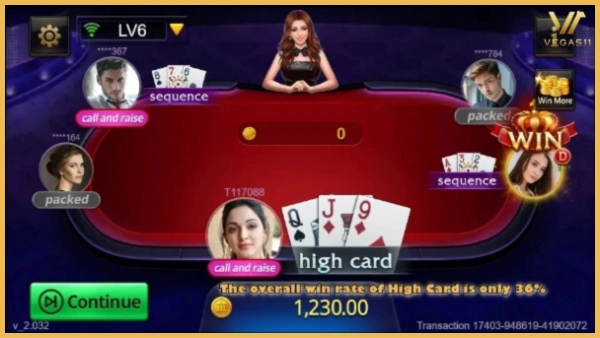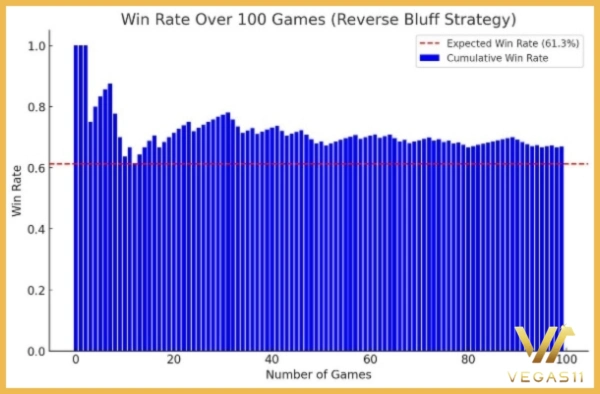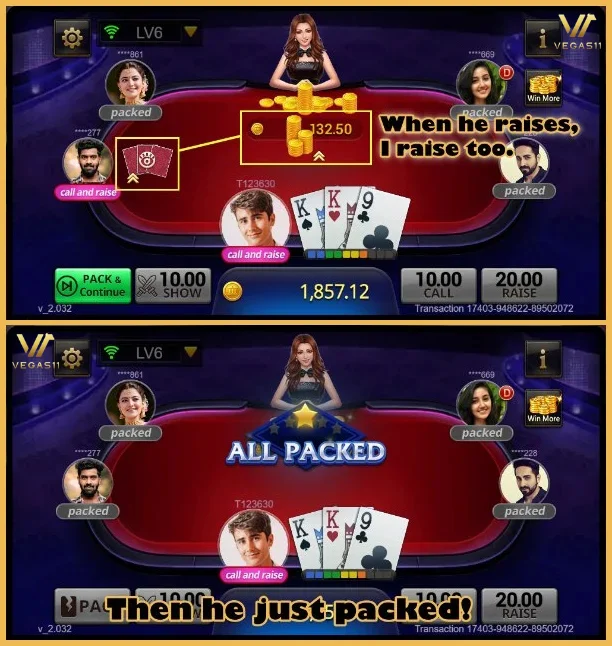How to Play Teen Patti Like a Pro? Honestly, It’s Not That Hard.
This article will share the latest 2025 Teen Patti tips, helping you maintain a solid winning chance even when you’re dealt high cards. Feel the presence of Goddess Lakshmi right beside you at the Teen Patti table!
Why Should You Learn Teen Patti Winning Tips?
Teen Patti isn’t just a game of luck—it’s a battlefield of psychological warfare, calculation, and strategy, also known as Bluff ka Maidan.
Whether you’re a experienced player or a beginner, you must constantly apply different tips to increase your chances of winning—not just rely on luck!
If you want to maximize your chips, boost your winning rate, or take control of the game, here are some free Teen Patti tips to master:
Discard High Cards Wisely、Pretend to Fall into a Bluffing Trap、Mimic Your Opponent’s Betting Pattern
Read More:How to Play Teen Patti? Learn the Rules & sequence in 1 Min
Discard High Cards Wisely
Letting go of weak high cards is a smart way to control your losses!
Typically, the winning rate for high cards is only 36%. If your highest card is below a Jack (J), your chances of winning drop to less than 25%, making such hands not worth calling.
In a game of Teen Patti, out of every 10 rounds, you’ll end up with high cards in at least 7 of them, many of which are weak cards lower than J.
Not folding = long-term losses!

Let’s take a look at the actual profit and loss comparison
Assume in 10 rounds, you receive 5 weak high-card hands. The Ante is 10 Rs, and calling costs 20 Rs.
- Using High Card Bailout: 10 x 5 = 50 Rs
- Continuing to Call for One Round: (10 + 20) x 5 = 150 Rs
The loss from calling is 3 times higher than folding! These low-win-rate hands will slowly drain your chips. Instead, fold decisively and save your bankroll for hands with real winning potential!
Read More:21 Teen Patti Real Money Apps Download & Win ₹2000 Daily!
Pretend to Fall into a Bluffing Trap
Reverse Bluff – The core of this Teen Patti tip is simple: “Pretend to fall into a bluffing trap” and then strike back!
In Teen Patti, many players love to bluff, acting confident to make their opponents believe they have a strong hand. With Reverse Bluff, you can lure them into continuously raising—then turn the tables and bluff them back!
Mastering the Reverse Bluff Technique

When I tested this strategy at Vegas11 Casino, the guy on my left barely glanced at his cards before instantly hitting RAISE! This was a clear sign that he was most likely bluffing.
I calmly called for a few rounds, waiting for the perfect moment to strike. When the time was right, I finally RAISE—and just like that, he panicked and packed immediately. Bhai, Reverse Bluffing ka asli mazaa aaj hi mila!

I even had ChatGPT simulate the Reverse Bluff Strategy in a game, and the results were remarkable—over 100 rounds, the win rate soared to 66%!
That’s a 16% boost compared to random betting. This strategy triggers the “sunk cost effect” on opponents, making them feel committed with no way to back out. Head to VEGAS11 now and try reverse-bluffing your opponents with just 0.5 Rs!
Mimic Your Opponent’s Betting Pattern
Winning in Teen Patti isn’t just about luck—it’s about mind games! The Mirror Betting Strategy involves copying your opponent’s betting behavior, making it difficult for them to read your hand strength.
This technique is especially useful against experienced players who are skilled at spotting weak hands.
If you’re dealt a Pair or better, you already have a solid winning chance! This is when you should apply the Mirror Betting Strategy to pressure your opponent, confuse their judgment, and force them into making mistakes—either misbetting or folding.
How to Execute the Mirror Betting Strategy?
- Opponent raises after seeing their cards → You also raise after seeing your cards.
- Opponent plays cautiously with a call → You also call cautiously.
Simply put, it’s like looking in a mirror—whatever they do, you do the same!
**If your opponent keeps raising aggressively, it could indicate a strong hand. In this case, analyze your own hand strength and decide whether to continue or fold to avoid unnecessary losses.**





